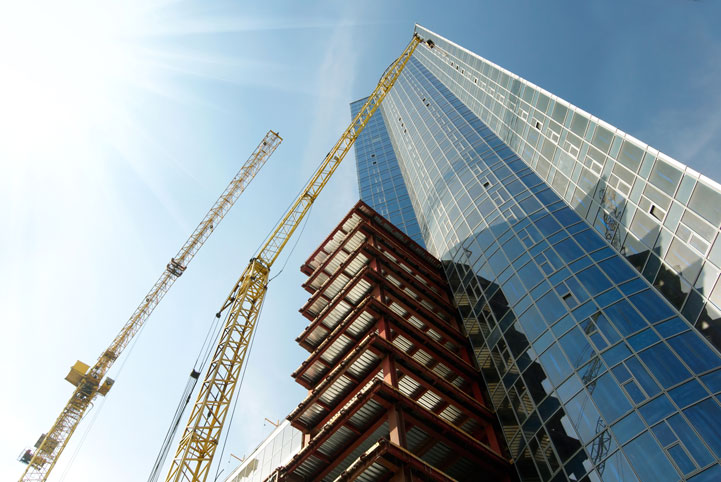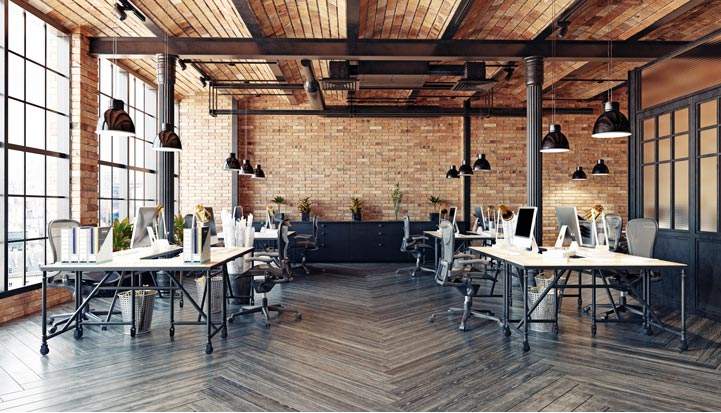Inflation of additional costs is becoming a key factor for firms looking to take prime office space while hybrid working continues to change the world of work
Costs a cause for concern
As the first half of 2022 closes, there are two key trends facing the office markets worldwide: economic uncertainty from inflation, and that hybrid working is here to stay, at least in some form.
Inflation has been a dominant topic both in the press and among firms looking to take or refurbish space. Rising costs for materials and supply chain disruption are leading to higher fit-out costs and longer construction times, at a time when occupiers are looking to create attractive office space to compete in the war for talent. These rising costs are starting to feature for companies looking to take top-tier space in prime city centre markets.
Running counter to some of these cost escalation factors, companies are finding efficiencies creating workplace environments where employees can thrive, be engaged and do their best work. There is significant regional and sector variation, but on the whole, the trend of hybrid working has become established over the first half of 2022. At the same time, both corporate regulatory and employee requirements around sustainability are having a strong impact on site selection.
Each quarter, the Savills team of expert local tenant representation professionals and researchers present a snapshot of occupancy costs for prime office space across global markets critical to our clients.
For this issue of Savills Prime Office Costs (SPOC) insights, we spoke with local tenant agents to understand how increasing costs are affecting occupier behaviour and how hybrid working is changing occupier behaviour and the use of space.
Quarterly highlights
Regardless of region, rising fit-out costs driven by higher commodity costs, supply chain issues and rising labour costs, dominate discussions with occupiers. Over the past year, across SPOC markets, fit-out costs have risen an average of 6%. Though these cost increases range from flat growth in some markets, where the increases haven’t filtered into new leases, to nearly 30% in London. However, for most markets, the average rise in fit-out costs were between 5% and 10% on the year, broadly aligning with headline inflation figures. It is likely that these costs will continue to increase in the near term as long as the global economic, political, and health situations remain uncertain.
Several markets have seen rising face rents in concert with the increasing fit-out and construction costs being felt across the board. Asia Pacific markets such as Shanghai, Seoul, and Ho Chi Minh City have each seen increases, while several key European cities have also seen face rent rises on the quarter. European lease structures are often index-linked, which is likely a key driver of the rising rents in this region.
Paris is a notable market this quarter as the city has seen increasing face rents, rising fit-out costs, and shrinking landlord concessions. This confluence of events comes as the Parisian market increases in desirability and landlords need to do less to attract tenants. In fact, Paris is the only market across the SPOC cities where the abated rent period has shrunk.
Markets which have seen the largest increases in net effective costs over the quarter are largely clustered in the EMEA region, though Shanghai is a notable exception as leasing activity resumed as the city emerged from a Covid-19-induced lockdown. European market costs were largely driven by the aforementioned increasing face rents as well as rising fit-out costs. Costs remain high in key gateway markets in the United States, largely driven by leasing demand from financial services, professional and business services, as well as the tech industry. However, tech industry demand does appear to be softening in light of growing economic uncertainty. Rising costs are slowing down development and retrofitting activity creating shortages of prime, sustainable office accommodation. This demand and supply imbalance is more pronounced in cities with already ultra-low vacancy rates, putting further upward pressure on rents.

Market Insights: A rising tide
Increasing costs, supply shortages, and increased demand are coupled with companies trying to boost numbers of workers in offices
Asia Pacific
Across the region, workers have continued to return to offices as economies and markets have begun to open up again as Covid-19 restrictions have eased. For many locations, working from home or hybrid working were not adopted as broadly or for as long, as has been the experience in other geographies. As a result (and certainly supported by cultural factors), in many instances, office utilisation rates have returned to close to their pre-pandemic levels relatively quickly. The situation remains dynamic, however, and Covid-19 concerns and restrictions continue to have an impact on business and occupier activity-to-most notably in China as we head into the second half of 2022.
Markets across Asia Pacific have continued to act with caution as economies have been impacted by successive waves of Covid-19 which has limited economic activity, particularly in China as the government’s zero-Covid-19 policy prompted lockdowns in Q1 and Q2. Other markets however have seen improvements in business sentiment which has boosted leasing activities and bolstered rental growth even as supply chain issues and inflation have pushed up fit-out costs.
EMEA
While there are still significant differences across the region, office utilisation rates are rising steadily. Ranging from an average of 80% of workers back in the office in Dubai to less than 40% of workers in the office in the London City submarket, there are wide-ranging social and cultural elements at play.
The region is also facing soaring energy prices as a result of the Ukraine- Russia conflict which is largely driving inflation figures across the region. However, steel prices across Europe have fallen by 48% during the second quarter of the year, following weaker economic prospects, which may begin to temper the rise and are forecast to reach three times their pre-pandemic price by the end of next year, further increasing build and fit-out costs for office developers and occupiers.
North America
While still well below pre-pandemic levels, the share of workers returning to the office continues to increase. Across the region, average office utilisation rates stood at nearly 43% at the end of June, which is the highest level since the pandemic began. Fit-out costs are also increasing across the region, though many occupiers are insulated from these increases as they’re locked into longer-term leases. Leasing activity did slow slightly in Q2, driven by worries about economic uncertainty, though still above pre-pandemic levels.
Another increase being felt across North America is the rise in availability of sublease space. The space coming to market now appears to be tied to longer-term space reduction or cost cutting from those who were unclear on what to do with excess space during the pandemic and are now moving forward with plans for smaller floorplans. However, occupiers are still prioritising higher quality spaces and pricing for the best quality buildings and locations remains high and concession terms remain generous to attract and retain tenants.
Outlook
Rising costs
Increasing costs for materials and labour are beginning to flow through to costs quoted to occupiers, though the increases remain relatively low as a share of total cost in many markets. However, as inflation and supply chain problems persist, we can expect to see these costs as a share of the net effective cost to occupiers increase.
Downside drivers
Rising inflation rates, uncertainty over geopolitics, and potential energy crises over the coming winter have driven increased speculation over the potential for a recession. While many office occupiers will be insulated from volatility given longer lease terms for their spaces, some may be more exposed to potential downside risks because of their industry sector, location, or other potential market headwinds.
Continued push towards sustainability
With rising materials and energy costs being passed to occupiers, sustainability will only become more important over the coming years. Several SPOC markets will also see increased EPC certification requirements, which will also affect where occupiers choose to take up space. From looking to green-certified buildings to addressing other elements of their ESG strategy, firms increasingly will look to sustainability to lower their expenses while also attracting workers to their companies and back to the office. Despite the fact that green premia may apply for the few ESG-compliant buildings available, in the long term, occupiers can achieve operational savings and remain attractive for new talent.

METHODOLOGY
The Savills Prime Office Cost (SPOC) Index presents a quarterly snapshot of occupancy costs for prime office space throughout the world, as provided by our expert, local tenant representation professionals and researchers.
The adjusted annual all-in occupancy cost represents real-time transaction terms for 20,000 sq ft (2,000 sq m) of usable space based on a basket of the top five most expensive properties to calculate ultra-prime average. The North American markets use a sample of very high rent threshold buildings (leasing occurring at the highest end of market).
All costs are reported in an annual, standardised format of USD per sq ft of usable space to account for variations in currency, reflect local payment protocols, and adjust for measurement practices across the globe. We have also factored in the credit value to the tenant generated from abated rent and the cost associated with fitting out the premises in order to provide an ’all in‘ total occupancy cost in USD per usable square foot.
The fit-out costs were gathered from local Savills teams assuming the leasing scenario described above, plus the following:
i) 30% cellularisation with the remainder of space open plan,
ii) construction and cabling only (no furniture or professional fees).
